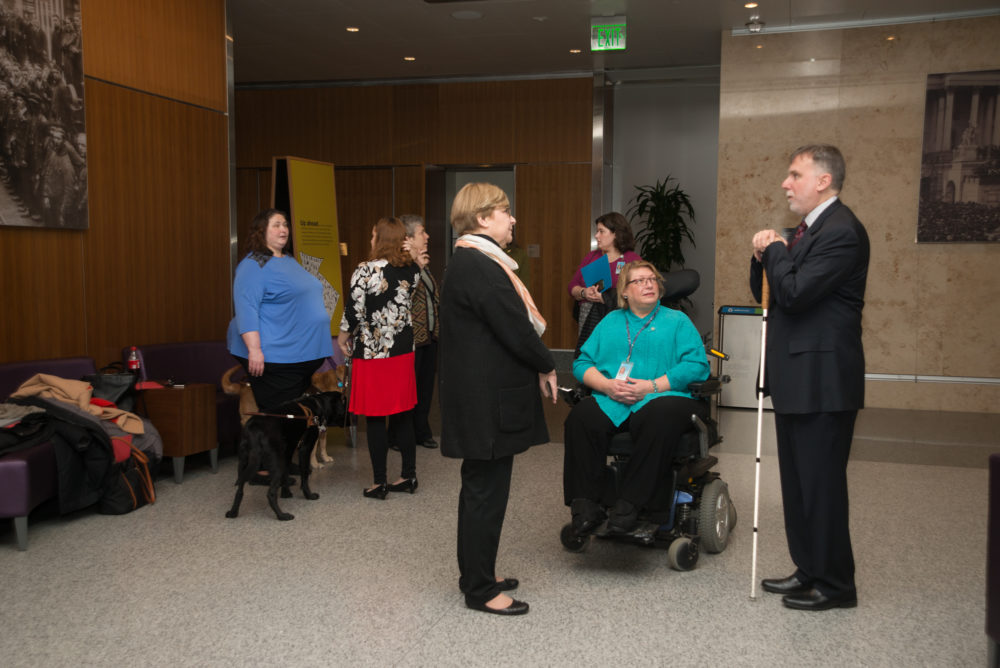Smithsonian museums are becoming more accessible in D.C. with the implementation of new tech for the visually impaired.
Smithsonian museum visitors who are blind or have low vision can now access an app that uses their smartphone cameras or special glasses to provide wayfinding information coupled with on-demand verbal descriptions of everything from individual objects to entire exhibitions.
California-based Aira, the app curator, uses artificial intelligence to help people with vision loss live independently. Aira worked with Access Smithsonian, the museum’s office focused on visitor accessibility, to get the tech implemented. The Smithsonian is the first museum complex to offer the app, which can also help users navigate city streets, public transportation, airports, stores, sporting events and doctors’ appointments, the company said in a press release.
So how does Aira actually work?
A visitor can download the app to their iPhone or Android smartphone and use their phone’s camera or Aira smart glasses (at no cost to the user) to connect to a highly-trained live agent who can see from their remote location what is in front of or near the visitor, Beth Ziebarth, director of Access Smithsonian, told Technical.ly. Unique to the Smithsonian, the Aira agent can supplement their own descriptions with verbal descriptions of objects written by museum staff.
The Smithsonian has purchased minutes for visitors to use for free on these calls. Each call can last up to 30 minutes in duration but visitors can call back to continue service if they exceed that time.
“The Smithsonian seeks to provide visitors who are blind or have low vision with independent access to the museums through Aira. Aira is one of a number of options to experience exhibitions including docent-led tours, tactile exhibit components, Braille and raised-line graphics brochures, and verbal descriptions via an app or website,” Ziebarth told Technical.ly.
Ziebarth said she first learned about Aira two years ago. Once the contract was prepared and signed, access to Aira service was available within two weeks. Aira, like other access services such as sign language interpretation and real-time captioning, are funded through the Smithsonian federal budget, Ziebarth said.
On March 12, the new accessibility service was demoed at the National Museum of American History and is now available in all of the Smithsonian museums and the National Zoo. This is not all that the Smithsonian has in store to improve accessibility, Ziebarth told Technical.ly that The Smithsonian Castle Visitor Information Center will feature a universally designed talking, tactile map of the National Mall later this spring.







